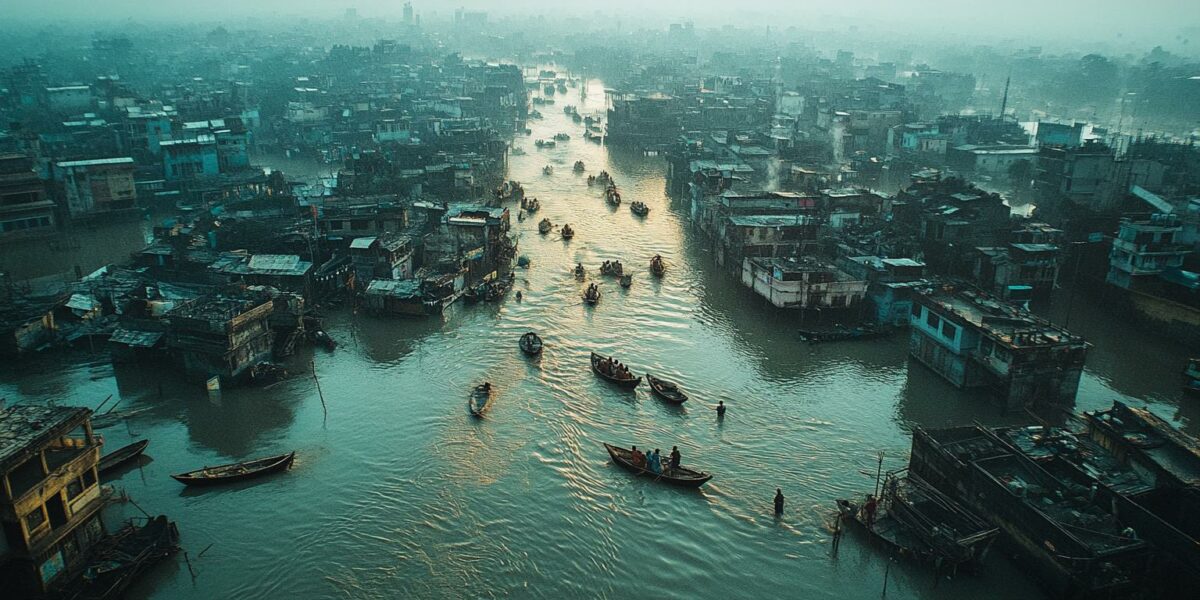Unraveling the Monsoon Mystery
As erratic monsoon patterns continue to perplex experts, the link to climate change becomes increasingly evident. Year after year, rainfall intensity defies predictions, prompting essential discussions on its causes. The stakes are high as communities face the brunt of these climatic shifts.
Across South Asia, the impact of unpredictable monsoons is felt most acutely. Vulnerable regions endure relentless storms, triggering catastrophic flooding and landslides. The pressing question remains: Are monsoons worsening? Answers are sought amid this atmospheric chaos.
Exploring the role of infrastructure and governance, experts highlight a dire need for improved systems. As the climate crisis intensifies, government accountability and local disaster response become pivotal in safeguarding affected populations.
Conversations with climate activists and scientists reveal a tapestry of solutions and challenges. Anelise Borges hosts discussions with thought leaders like Roxy Mathew Koll and Disha Ravi, shedding light on potential pathways through this turbulent climate landscape.
The Human Cost of Unpredictable Rain
The human toll of these environmental shifts is staggering. Communities are left to grapple with the devastation caused by relentless downpours. The monsoon’s unpredictability brings not only physical destruction but also psychological distress to those in its path.
Efforts to mitigate these impacts are multifaceted:
- Strengthening community-based disaster response teams.
- Developing robust infrastructure to withstand extreme conditions.
- Enhancing government policies for rapid response and recovery.
While some progress has been made, the journey toward resilience is fraught with challenges. The path forward requires unwavering commitment and innovation from all sectors.
Highlighting stories of resilience, we turn to Farzana Faruk Jhumu from UNICEF Bangladesh, who advocates for youth involvement in climate action. Her insights underscore the vital role of empowering the younger generation in crafting sustainable futures.
Climate Justice and Responsibility
Climate justice remains a central theme in addressing the monsoon dilemma. Communities least responsible for climate change often suffer the most, prompting critical discussions on equitable solutions. The dialogue extends beyond borders, demanding global cooperation and responsibility.
Voices like Shah Chowdhury of Footsteps Bangladesh emphasize the importance of local initiatives. Building resilience from the ground up, his organization fosters community-led solutions to combat monsoon challenges head-on.
Global partnerships and funding are essential to bolster these local efforts. As the climate crisis transcends national boundaries, a shared commitment to justice and sustainability becomes imperative.
Ultimately, the question of responsibility looms large. The global community must acknowledge its role in exacerbating climate change and work collaboratively to mitigate its effects. Only then can we hope to safeguard our planet and its most vulnerable inhabitants.



Simba_Xanadu
Shoutout to all the climate warriors out there fighting the good fight! 🌧️
sophie_galaxy
Can we even mitigate these effects, or is it too late already?
Matthew_Whisper
This is seriously scary stuff. How much time do we have before things get worse?
socksempyrean
I’m curious, how does climate change specifically affect monsoon patterns?
jaspermoonshadow
Thank you for raising awareness about this pressing issue. We need more discussions like this!
shadow
Why do governments always seem to be a step behind when it comes to climate change?
JaneEchoes
Great article! But I wish it had more on how individuals can contribute to solutions.
Cleo5
Is it just me, or does the rain seem to be in a permanent state of PMS these days? 😂
CoraCipher2
How can local communities in South Asia better prepare for these unpredictable monsoons?
JoshuaSpark6
Wow, this is a real eye-opener! Thanks for shedding light on such a crucial issue.